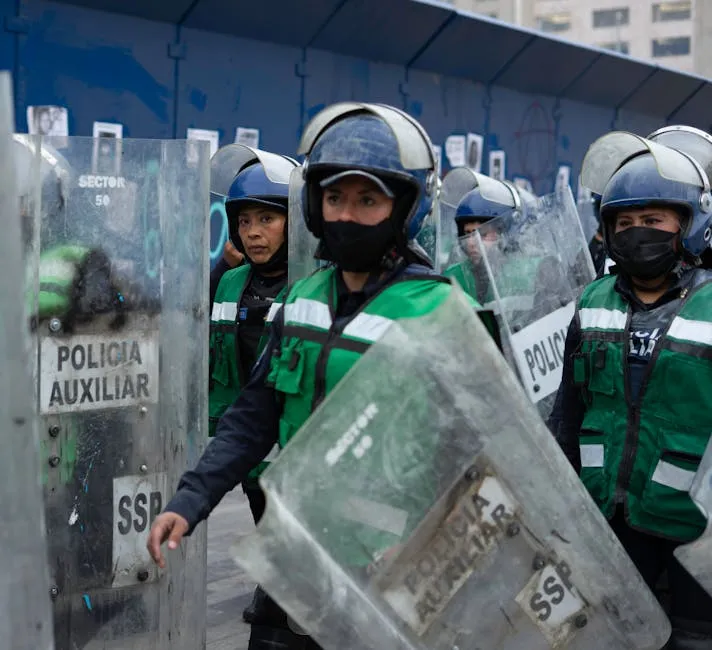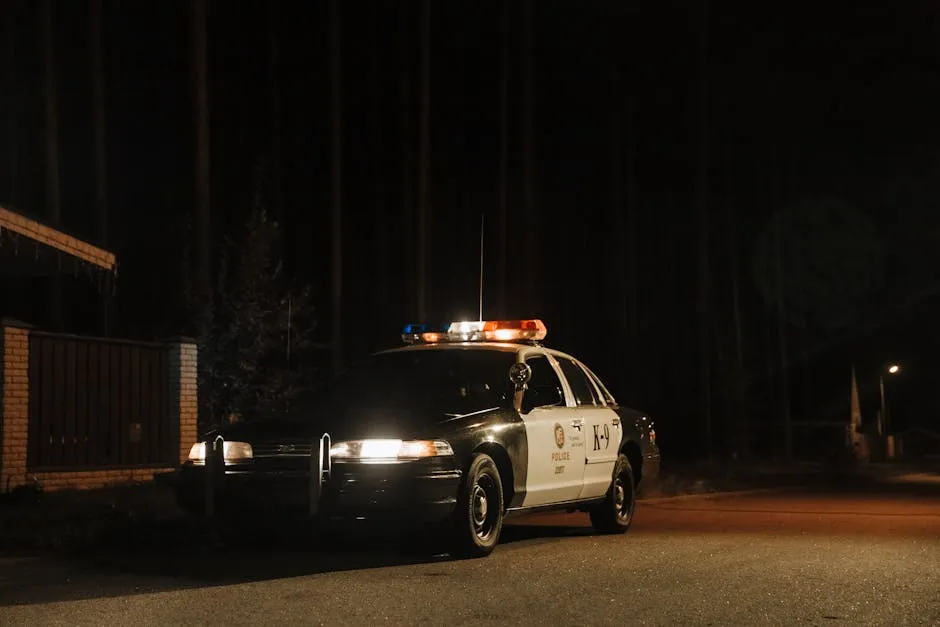Introduction
Des Moines, Iowa, is a city with a unique blend of charm and complexity. While it boasts beautiful parks and vibrant neighborhoods, crime remains a pressing concern for many residents. The latest crime statistics shed light on the current situation.
Understanding crime rates is crucial for everyone. Residents need to feel safe in their homes. Potential movers want assurance about their new community. Policymakers rely on these statistics to shape effective strategies for crime reduction and community safety.
The importance of crime statistics cannot be overstated. They provide a clear picture of safety levels, trends, and potential risks within the city. With a commitment to transparency, local law enforcement agencies report data regularly, ensuring that the public is informed.
In this analysis, we’ll break down various crime statistics, including overall crime rates and specific categories like violent and property crime. We’ll also explore comparisons with state and national averages, offering a comprehensive view of the safety landscape in Des Moines. So, buckle up as we embark on this enlightening journey through numbers, trends, and insights that matter to you!

Understanding Crime Statistics
What Are Crime Statistics?
Crime statistics are numerical representations of crimes reported to law enforcement agencies. They serve as an essential tool for understanding public safety within a community. These statistics help identify patterns, allocate resources, and develop strategies to combat crime.
Data collection mainly occurs through two primary systems: the Uniform Crime Reporting (UCR) program and the National Incident-Based Reporting System (NIBRS). The UCR program, managed by the FBI, compiles data from thousands of law enforcement agencies across the country. This program categorizes crimes into two groups: violent and property crimes, allowing for straightforward comparisons.
NIBRS, on the other hand, collects detailed data on each incident reported. It provides insights into victim demographics, relationships between victims and offenders, and the nature of each offense. The shift toward this more detailed reporting enhances our understanding of crime in urban areas.
Both systems rely on local law enforcement agencies to submit accurate and timely data. However, underreporting remains an issue. Some crimes go unreported, creating gaps in the data. Despite these challenges, crime statistics remain vital for making informed decisions about safety and policy.
By grasping the fundamentals of crime statistics, residents can better understand their community’s safety. Whether you’re a long-time resident or new to the area, these insights equip you with the knowledge to navigate life in Des Moines confidently. Let’s continue our analysis and explore the specific crime rates that shape the narrative of safety in the city.

The Role of the FBI and Local Law Enforcement
The FBI’s Uniform Crime Reporting (UCR) program plays a crucial role in tracking crime across the United States. This program compiles data from more than 18,000 law enforcement agencies nationwide. By standardizing crime reporting, the UCR helps create a consistent framework for understanding crime trends over time.
Local police departments contribute significantly to this data collection. They report incidents like assaults, burglaries, and thefts, ensuring that the information is up-to-date and accurate. Their efforts help paint a clearer picture of crime in specific regions, such as Des Moines, Iowa.
Law enforcement agencies are responsible for submitting crime statistics regularly. They provide essential details on various offenses, victim demographics, and trends that policymakers and the public can analyze. The collaboration between local departments and the FBI is vital for developing effective strategies to combat crime.
Crime Rates in Des Moines
Overall Crime Rate
Des Moines has an overall crime rate of 33 per 1,000 residents. This statistic may sound alarming, but let’s break it down. It means that if you live in Des Moines, there’s a 1 in 30 chance of becoming a victim of crime. While those odds sound a bit daunting, it’s essential to remember that crime rates vary by neighborhood and type of crime.
High crime rates can lead to significant implications for residents. They might influence decisions about where to live, how to secure homes, and community involvement in safety initiatives. Understanding these numbers helps residents feel more informed and prepared.
Consider enhancing your home security with a Security Camera System. It can provide peace of mind and a sense of safety, ensuring that you can keep an eye on your property, even when you’re not home.

Violent Crime Statistics
When it comes to violent crime, Des Moines reports a rate of 6.10 per 1,000 residents. This includes serious offenses such as murder, assault, and robbery. To put it in perspective, there’s a 1 in 164 chance of being a victim of violent crime.
Breaking it down further, murder rates in the city have fluctuated over the years. Assault remains the most common violent crime, accounting for a large portion of reported incidents. Robberies, while less frequent, still pose a concern for residents.
Understanding these statistics is critical for both current residents and those considering a move. It brings attention to the importance of community safety measures and local law enforcement efforts. Active participation in neighborhood watch programs and community policing initiatives can significantly reduce these numbers over time.
For personal safety, consider getting a Personal Safety Alarm. It can be a lifesaver in emergency situations, providing a loud alert to draw attention and deter potential threats.
In summary, while Des Moines has its challenges in terms of crime, awareness and proactive measures can lead to a safer community for everyone.

Property Crime Statistics
Property crime in Des Moines is a significant concern, with rates reaching 26.92 per 1,000 residents. This means that for every 1,000 people, nearly 27 fall victim to property crimes. To put it simply, if you have 37 friends, one of them could face a property crime. This statistic can be a tad alarming, but understanding the types of property crimes can provide clarity.
The three main types of property crimes are burglary, larceny, and motor vehicle theft. Burglary occurs when someone illegally enters a building with the intent to commit theft. Larceny is all about stealing, whether it’s shoplifting or stealing someone’s belongings. Motor vehicle theft, as the name suggests, involves stealing vehicles. Each of these crimes contributes to the overall property crime rate, and being aware of them can help residents take preventive measures.
With a victimization rate of 1 in 37, it’s wise to stay vigilant. Locking doors, securing windows, and keeping valuables out of sight can decrease the chances of becoming a victim. Awareness is key.
Consider investing in a Home Security System to protect your property. Having a robust security system can deter burglars and give you peace of mind.

Motor Vehicle Theft
Motor vehicle theft is a particularly pressing issue in Des Moines. The statistics reveal a worrying trend, with residents facing a 1 in 196 chance of having their car stolen. This rate is notably higher than the national average, which means that Des Moines drivers should take extra precautions.
So, what can you do to protect your vehicle? Simple actions like locking your doors, parking in well-lit areas, and using anti-theft devices can significantly reduce the risk. Also, consider utilizing Vehicle GPS Trackers; they can be lifesavers if your vehicle ever goes missing.
Understanding these statistics isn’t just about numbers; it’s about awareness and taking proactive steps to safeguard your belongings.

Yearly Trends and Historical Data
Historical Overview of Crime in Des Moines
Des Moines has witnessed fluctuations in crime over the last decade. The following table illustrates the crime data collected over the years, showcasing both property and violent crime rates.
| Year | Violent Crime Rate | Property Crime Rate | Total Crime Rate |
|---|---|---|---|
| 2014 | 6.00 | 25.00 | 31.00 |
| 2015 | 6.50 | 26.00 | 32.50 |
| 2016 | 6.10 | 27.00 | 33.10 |
| 2017 | 6.50 | 28.00 | 34.50 |
| 2018 | 5.90 | 26.50 | 32.40 |
| 2019 | 5.80 | 25.00 | 30.80 |
| 2020 | 6.50 | 29.00 | 35.50 |
| 2021 | 6.10 | 25.50 | 31.10 |
| 2022 | 6.40 | 26.92 | 33.01 |

In recent years, the violent crime rate has remained relatively steady, while property crime rates have shown slight fluctuations. Overall, the trends indicate that while Des Moines has its challenges, there has been a concerted effort to address crime.
Understanding these trends is vital for residents and policymakers alike. A declining trend in violent crime suggests improvements in community safety. On the other hand, property crime trends remind us that vigilance is necessary. As the city continues to develop and grow, being aware of these statistics can guide safety measures and community involvement initiatives.
In summary, while crime remains a concern, the historical data presents a nuanced picture of Des Moines, encouraging ongoing community engagement and proactive measures to enhance safety.

Year-Over-Year Changes
Crime statistics in Des Moines have seen ups and downs over the years. Recent trends reveal significant shifts in specific crime categories, which can be both alarming and enlightening. For instance, violent crime rates have shown some fluctuations, but overall, there’s been a slight decrease. In 2022, the violent crime rate was 6.10 per 1,000 residents, a rate that has remained relatively stable compared to previous years.
However, property crime tells a different story. With a property crime rate of 26.92 per 1,000 residents, this category has witnessed fluctuations, with occasional spikes tied to economic downturns and social factors. The year 2020 saw a notable increase in property crime, likely influenced by the pandemic—economic uncertainty and increased unemployment can lead to higher crime rates as individuals struggle to make ends meet.
Economic factors play a crucial role in these statistics. When jobs are scarce, desperation can drive some to commit crimes. Additionally, social issues such as drug addiction can exacerbate crime rates. For instance, areas with higher instances of substance abuse often see corresponding rises in property crime, as individuals seek quick cash to support their habits.
Community initiatives aimed at addressing these underlying issues can make a difference. Local organizations working to improve economic opportunities, provide support for addiction recovery, and enhance community engagement can help reduce these crime rates over time. Understanding the factors behind these trends empowers residents and officials to take proactive steps toward creating a safer environment.

Comparisons with State and National Averages
Des Moines vs. Iowa Statewide Crime Rates
When you compare crime rates in Des Moines to those of Iowa as a whole, the difference becomes apparent. Des Moines has a higher overall crime rate, placing it above 98% of communities in the state. While the statewide violent crime rate stands at approximately 3.8 per 1,000 residents, Des Moines’ rate of 6.10 is significantly higher. This discrepancy raises concerns for residents and potential movers.
Higher crime rates in Des Moines can have several implications. For residents, it means a greater likelihood of becoming a victim. For policymakers, it signals the need for enhanced law enforcement resources and community outreach programs. Addressing these higher rates requires a multifaceted approach that includes community policing, crime prevention initiatives, and economic development programs.
One proactive measure to consider is installing a Smart Lock for Doors. These locks enhance security and allow you to control access to your home remotely, providing an extra layer of protection.

National Comparisons
Looking at national averages, Des Moines still holds its ground, but not in a favorable light. The city’s crime rate exceeds the national median for similarly sized communities. For instance, the national average for violent crime is around 4 per 1,000 residents, while Des Moines clocks in at 6.10. This discrepancy can be troubling for residents, especially when considering the perception of safety in their neighborhoods.
Being above the national median indicates a need for strategic planning and resource allocation for law enforcement. It also highlights the importance of community involvement. Engaging residents in safety initiatives can foster a sense of shared responsibility. Neighborhood watch programs, community meetings, and outreach events can all play a role in addressing crime.
In summary, the crime statistics in Des Moines, when compared to both state and national averages, paint a complicated picture. The city faces challenges that require collective efforts from residents, law enforcement, and policymakers. Understanding these comparisons helps drive the conversation about safety and community well-being, encouraging proactive measures to improve the situation.

Safety in Des Moines: A Neighborhood Perspective
Popular Neighborhoods and Their Crime Statistics
Des Moines is a city of neighborhoods, each with its own character and safety record. Let’s take a closer look at some popular areas and their crime statistics, shall we?
Brook Run boasts a friendly vibe and a relatively low crime rate. With only 14 incidents per 1,000 residents reported, it’s a neighborhood where families often feel comfortable. On the other hand, Waterbury/Ingersoll Park presents a stark contrast. Here, the crime rate climbs to around 29 incidents per 1,000 residents. While it has some charming cafes, residents may want to keep an eye on their belongings.
Moving to Linden Heights/Westwood, the statistics show a mixed bag. This neighborhood has a slightly elevated crime rate of 23 per 1,000 residents. It still retains a sense of community, but residents might want to stay vigilant, especially during late nights.
In Millman, the crime rate dips back down to 15 per 1,000 residents, making it a sought-after spot for young professionals. The balance of safety and urban life makes it a top choice. Meanwhile, Salisbury Oaks has a crime rate similar to Brook Run, making it another family-friendly option.
Bloomfield Allen has a crime rate of 27 per 1,000 residents. It’s a lively area, but vigilance is key. Conversely, Waveland Woods/Waveland Park presents a safer environment, with a rate of 12 per 1,000 residents. Residents enjoy scenic parks and a sense of security.
Lastly, Lower Beaver East and Sheridan Gardens West have crime rates of 30 and 28 per 1,000 residents, respectively. While these neighborhoods have their perks, potential residents should weigh their options carefully and perhaps invest in a good security system.
Speaking of security, consider a Motion Sensor Light to deter potential intruders. These lights can illuminate your property when movement is detected, providing an extra layer of security.

Community Perceptions of Safety
What do residents think about safety in Des Moines? A recent survey sheds light on local perceptions. Approximately 61% of respondents feel “pretty safe,” expressing general contentment. However, 29% reported no safety concerns, while 8% mentioned notable fears.
Factors contributing to these feelings vary. Residents often cite local law enforcement visibility as a key factor. In fact, 54% of survey participants believe police presence is adequate, while 22% feel they respond slowly when needed.
Another significant factor is neighborhood engagement. Communities that actively participate in safety programs and neighborhood watch initiatives report heightened feelings of security. However, concerns about crime—especially in areas with higher rates—often lead to unease.
Thus, while many residents in Des Moines feel secure, it’s essential to acknowledge that perceptions of safety fluctuate based on personal experiences and neighborhood dynamics. Understanding these sentiments can help foster community engagement and proactive measures toward crime reduction.

Initiatives and Responses to Crime
Law Enforcement Strategies
Local law enforcement in Des Moines is committed to combating crime through various effective strategies. Community policing stands out as a core initiative. This approach fosters relationships between officers and residents, creating a partnership focused on crime prevention. Officers engage with community members, attend neighborhood meetings, and encourage public feedback.
Additionally, the Des Moines Police Department has implemented data-driven policing. By analyzing crime trends and hotspots, they allocate resources where they are most needed. This proactive approach helps reduce crime rates and enhance community safety.
The department also focuses on youth engagement programs. Initiatives like “Shop with a Cop” and school resource officers aim to build trust and positive relationships between law enforcement and local youth.

Community Engagement
Community involvement is vital to reducing crime in Des Moines. Numerous programs encourage residents to participate actively in safety initiatives. For example, neighborhood watch programs empower citizens to take a stand against crime. Residents report suspicious activities, fostering a cooperative environment.
Furthermore, the city promotes events like “National Night Out,” where neighbors gather to strengthen ties and learn about crime prevention. Such initiatives help residents feel invested in their community’s safety.
Organizations like the Des Moines Neighborhood Association also play a crucial role. They provide resources and support for residents looking to improve their neighborhoods. These efforts create a strong sense of community and contribute to a safer environment.
To further enhance personal safety, consider carrying a Pepper Spray. It can serve as a deterrent in risky situations, giving you an added sense of security.
Ultimately, fostering a culture of engagement between law enforcement and residents is key to enhancing safety throughout Des Moines. The combined efforts of both parties can lead to a more secure and vibrant city.

Conclusion
In summary, crime statistics in Des Moines reveal a complex landscape of safety. While some neighborhoods boast low crime rates, others challenge residents’ feelings of security. The importance of understanding these statistics cannot be overstated—they provide insights that empower current residents and potential movers alike.
Awareness of crime rates helps individuals make informed decisions about where to live and how to engage with their communities. As residents, staying vigilant and participating in local initiatives can significantly impact crime reduction efforts.
So, let’s rally together to create a safer Des Moines! Community engagement is essential, and every effort counts. Whether supporting local law enforcement or participating in neighborhood events, we can all contribute to a more secure and welcoming city. And for those cozy nights in, don’t forget to grab a LED Flashlight for those unexpected power outages!
For a deeper understanding of crime statistics, check out this comprehensive analysis of safety in Fremont. fremont crime statistics
Please let us know what you think about our content by leaving a comment down below!
Thank you for reading till here 🙂
All images from Pexels




